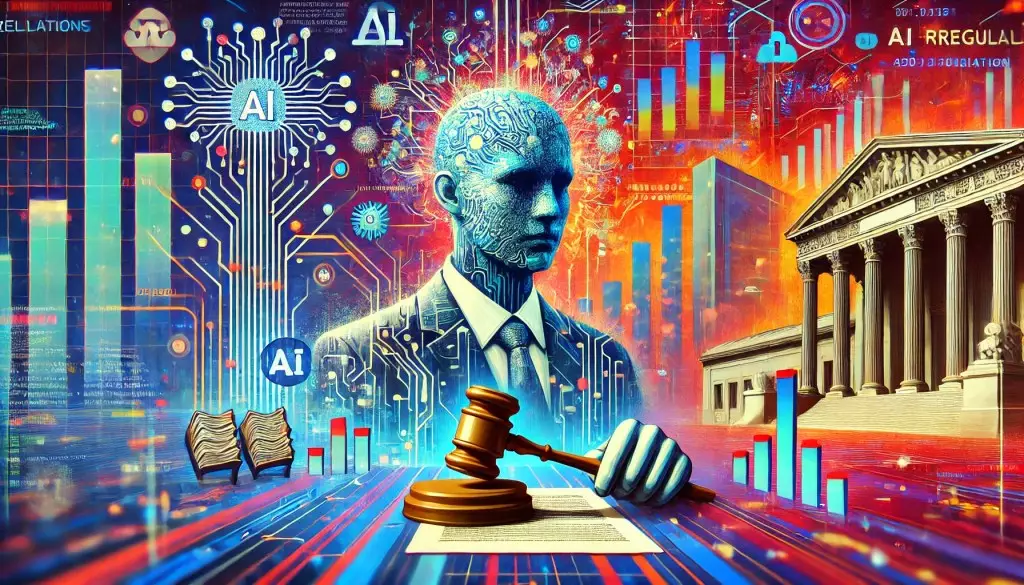The landscape of artificial intelligence has been irrevocably altered by political shifts and executive decisions, shaping not just the technology sector but the broader economy as well. Recent discussions surrounding AI regulation have revealed a pressing imperative for America: to solidify its leadership in innovation while fostering a collaborative and adaptive regulatory framework that supports growth. The current administration has reversed certain policies put in place by President Biden, signaling a potential shift towards a more laissez-faire approach, which has major implications for the progress of artificial intelligence in the U.S.
During an intensive Senate hearing, industry executives from major tech companies, including OpenAI and Microsoft, called for a streamlined process to enhance the necessary infrastructure for AI development. Their pleas reveal the urgency of enabling robust growth in this sector, particularly through the establishment of new data centers and power generation facilities. As AI systems require increasingly complex computations, the need for a resilient tech stack—supported by sufficient energy and human capital—has never been more critical.
Powering the Innovation Engine
Sam Altman, the CEO of OpenAI, championed the notion that the next decade could herald an era marked by an abundance of intelligence and energy, setting an optimistic tone for the discourse on AI. His assertion—coupled with his firsthand experience at OpenAI’s ambitious $500 billion Stargate project—highlights the importance of not just technology but the entire ecosystem that supports it. This includes everything from power infrastructure to skilled workforce development. Policymakers must prioritize infrastructure upgrades to ensure that America’s advancements in AI are not jeopardized by simply being outpaced by nations like China.
Furthermore, as the conversation shifts from mere creation to application, there is an urgent call for policies that encourage “AI diffusion,” advocating for a wider adoption of generative AI across various sectors. The synergy between innovation and implementation will ultimately dictate whether the United States can maintain its competitive edge in a rapidly evolving global market.
Regulation vs. Innovation: A Delicate Balance
At the heart of the Senate hearing was a tension between the need for regulation and the urgency of innovation. Senator Ted Cruz proposed a regulatory sandbox for AI development, an attempt to create a controlled environment where innovation can occur without stifling oversight. However, executives from leading tech firms argued that overly stringent regulations could hamper their progress. Microsoft’s Brad Smith articulated the broader sentiment by underscoring that innovation is not a solitary race; it requires collaboration across the industry, supported by a conducive regulatory framework.
Interestingly, the current administration leans toward a hands-off approach, emphasizing market-driven solutions. The executives articulated a valuable point: while the government’s role in setting standards is acknowledged, a rigid pre-approval system for AI models, akin to those in the European Union, risks creating bureaucratic bottlenecks. A flexible yet accountable regulatory approach could allow for thriving innovation while mitigating risks to societal engagement with AI technology.
Global Talent and Economic Growth
There’s a pressing need for U.S.-based AI companies to attract global talent, an argument frequently endorsed by industry leaders. The debate around immigration policies that favor skilled workers, including software developers and engineers, is crucial. The potential for the U.S. to harness international expertise is enormous, but it remains tethered to clear and favorable immigration policies. When companies face limitations in talent acquisition, the entire sector suffers, impacting the speed of AI advancement and America’s ability to compete on the world stage.
Moreover, barriers to exporting AI products and innovations deter global collaboration, potentially isolating America in a highly interconnected tech landscape. As emphasized during the hearing, connecting with worldwide markets is not merely advantageous; it’s imperative for sustaining leadership in AI.
Building an Inclusive AI Ecosystem
As the drive for faster AI diffusion continues, the imperative for an inclusive ecosystem becomes apparent. AMD’s Lisa Su pointed to the significance of fostering open ecosystems that invite innovation from diverse perspectives and experiences. By reducing entry barriers for emerging tech entrepreneurs and startups, the U.S. can cultivate a more vibrant and competitive marketplace for ideas.
The AI Tech Stack reflects the interconnected nature of hardware and software components, underscoring the need for synergy at every stage of development. This interconnectedness illustrates that excellence at all levels—from chipset fabrication to application development—is vital for sustaining competitive advantage. The recent struggles related to chip production further highlight the challenges posed by insufficient domestic manufacturing capabilities. The Chips and Science Act may provide a stepping stone, but its effectiveness will hinge on efficient implementation and realignment with industry needs.
In sum, while the dynamics of AI regulation and development are complex and multifaceted, the discussions taking place today exemplify a crucial pivot point. By fortifying both technological infrastructure and regulatory practices, the U.S. can not only secure its lead in AI but also set a framework for ethical, inclusive, and impactful technological advancements.

